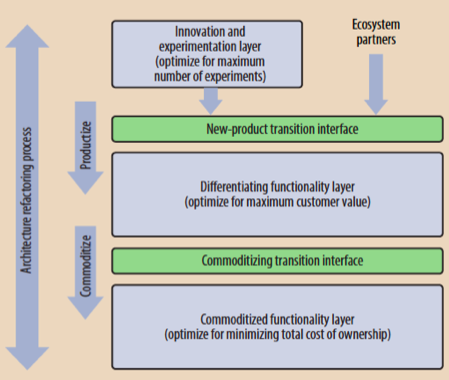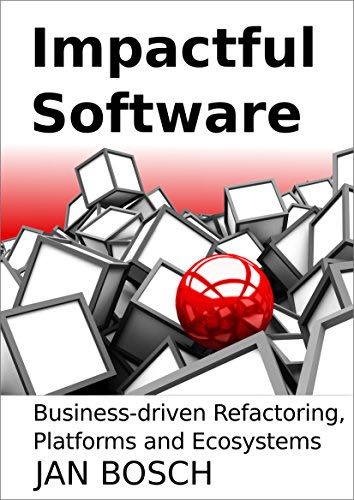 Companies spend very large amounts of resources on functionality that is commodity and does not offer any differentiation to the company and its customers. Our research shows that the R&D investment in commodity could be as high as 80-90%. Although the companies that I work with do not dispute the 80-90% numbers and do not want to spend that much on commodity, the response often is rather muted because many believe that this is an unavoidable reality in the development of complex software systems. Many treat it in the same was as they treat gravity: Most people would not consider gravity a problem because it simply is a fact of life.
Companies spend very large amounts of resources on functionality that is commodity and does not offer any differentiation to the company and its customers. Our research shows that the R&D investment in commodity could be as high as 80-90%. Although the companies that I work with do not dispute the 80-90% numbers and do not want to spend that much on commodity, the response often is rather muted because many believe that this is an unavoidable reality in the development of complex software systems. Many treat it in the same was as they treat gravity: Most people would not consider gravity a problem because it simply is a fact of life.
The consequence of spending so many resources on commodity is that of course very few resources are left for innovation and the development of differentiating functionality. This results in a lot of activity, but very little in terms of progress and impact. There are many examples of companies that have hundreds, if not thousands, of engineers working for them and where it is entirely unclear what it is that the organization actually delivers in terms of tangible results.
My experience, however, is that the problem of 80-90% of resources going to commodity is entirely addressable and that investment in commodity functionality can be reduced with at least 50% by proper, intentional decision making. Over the last year, I’ve been working on a book to outline the use of the Three Layer Product Model (see figure below) to increase the impact of your software. Impact can be defined in several ways, but the basic notion is to put your R&D resources where it provides most impact for customers and the bottom-line of the company.

Figure 1. Three Layer Product Model
In my new book, I outline four strategies to accomplish this, i.e. strategic resource allocation, refactoring, the use of platforms and engaging the ecosystem. These strategies build on each other and with the adoption of each subsequent strategy, the amount of resources freed up for focusing on innovation and differentiating functionality increases. These strategies are based on extensive research in, collaboration with and consulting at several companies in a variety of industries and provide concrete recommendations and a tangible course of action.
Although I encourage you to read the book for details, it describes how to classify your system architecture into commodity, differentiating and innovative components, how to refactor your architecture to reflect the 3LPM principles, how to build cascading 3LPMs that provide benefits over traditional platforms and tangible strategies for engaging your ecosystem. Apply the ideas outlined in the book and you will be able to reduce investment in commodity functionality with at least 50%. Now imagine what impactful software your organization could create if suddenly 40% or more of the people in R&D would suddenly be available for value adding, differentiating development!
For more information, see the book on Amazon or contact me!
Figure 2. Book cover
To get more insights earlier, sign up for my mailing list at jan@janbosch.com or follow me on janbosch.com/blog, LinkedIn (linkedin.com/in/janbosch) or Twitter (@JanBosch).

Jan, I went to the Amazon website to buy it and found, to my dismay, that it is only available for UK customers and in Kindle format only. Any information about when it will generally available? Is a print version in the works?
Hi Allan, the book should be generally available. Could you check again? Send me email on jan@janbosch.com to discuss more. Best, Jan